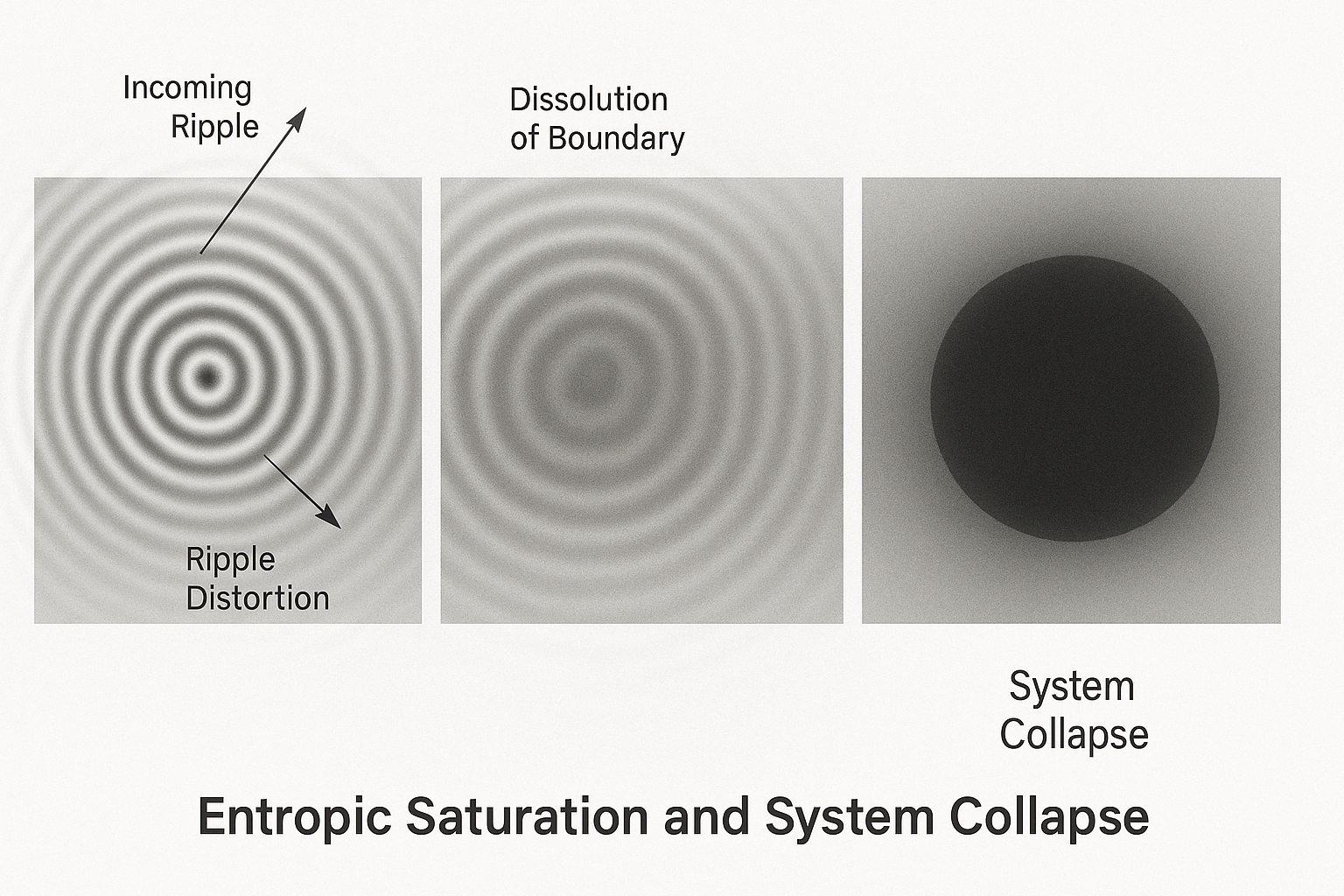In this final lesson of the chapter, we explore what happens when a system accumulates irreversible change to the point that rebound becomes impossible. Entropic saturation marks the threshold where containment fails, memory collapses, and ripple propagation can no longer preserve system identity. The result is a systemic collapse — either through stillness, fragmentation, or black hole-like behavior.
🔹 Section 1: Concept
Every system has a limit to how much irreversible change it can absorb while still maintaining configuration coherence.
When a system reaches:
Maximum echo asymmetry
Zero rebound fidelity
Complete containment failure
…it becomes saturated with entropy.
This entropic saturation point means:
All memory of initial state is lost
Incoming ripples dissolve into noise or are fully absorbed
The system no longer expresses its own structure through ripple interactions
Collapse doesn’t always mean explosion — in URFT, it often means loss of response or transition to a new state (e.g., black hole, freeze, or scattering).
🔹 Section 2: Analogy
Imagine pouring more and more ink into a glass of water. At first, you can still see the clear water structure. Eventually, the ink overtakes the glass — no ripple or clarity remains. It becomes uniformly dark.
That’s entropic saturation: the system loses the capacity to reflect, rebound, or respond.
🔹 Section 3: Simulation
Simulate ripple pulses through a system undergoing progressive irreversible change:
Frame 1: Ripple with moderate echo distortion, some rebound
Frame 2: Ripple enters, system boundary dissolves
Frame 3: Incoming ripple is absorbed completely, no echo returns
Visual: A sequence ending in stillness or blackness, showing collapse as the disappearance of structure
🔹 Section 4: Application
This principle explains:
Why certain systems “go silent” before catastrophic failure
Why black holes may appear dark — not due to force, but due to ripple extinction
Why entropy-dense zones lose their ability to interact
URFT models collapse as a limit state, not a singularity — it’s a phase of maximum irreversible change where the system can no longer ripple.
🔹 Section 5: Definition
Entropic Saturation: The critical threshold at which irreversible change overwhelms a system’s containment, memory, and rebound capacity, resulting in total collapse of ripple propagation and systemic identity.
🔹 Section 6: Test Path
Create a system (acoustic, optical, or field-based) where:
Controlled irreversible change is introduced over time
Measure rebound clarity and echo phase fidelity
Identify the point at which no measurable echo returns
Alternatively, simulate gravitational collapse using ripple-field analogs: track system response as echo distortion reaches zero, then observe whether collapse leads to absorption (black hole analog) or scattering (decoherence).
